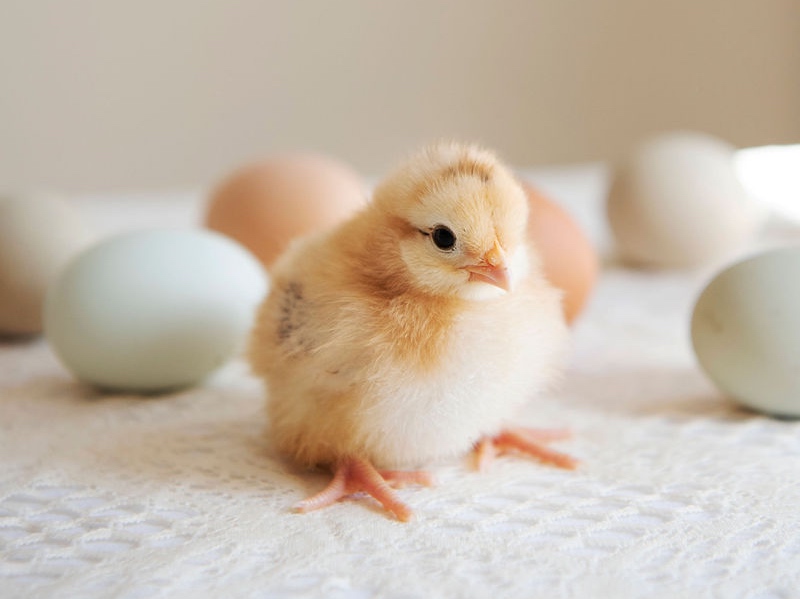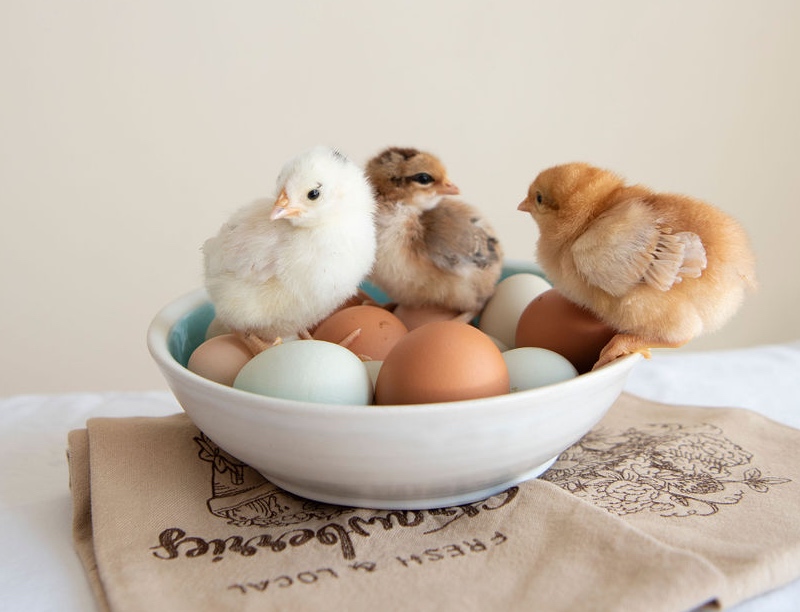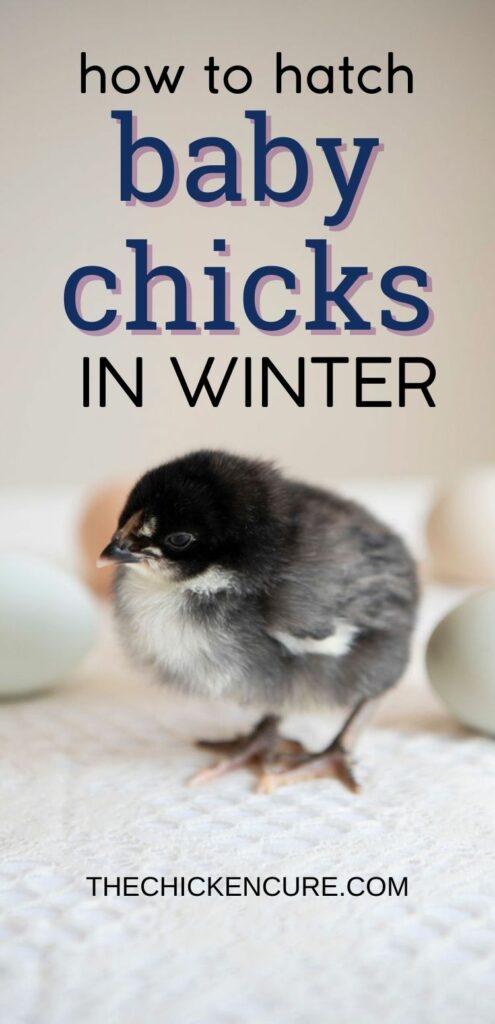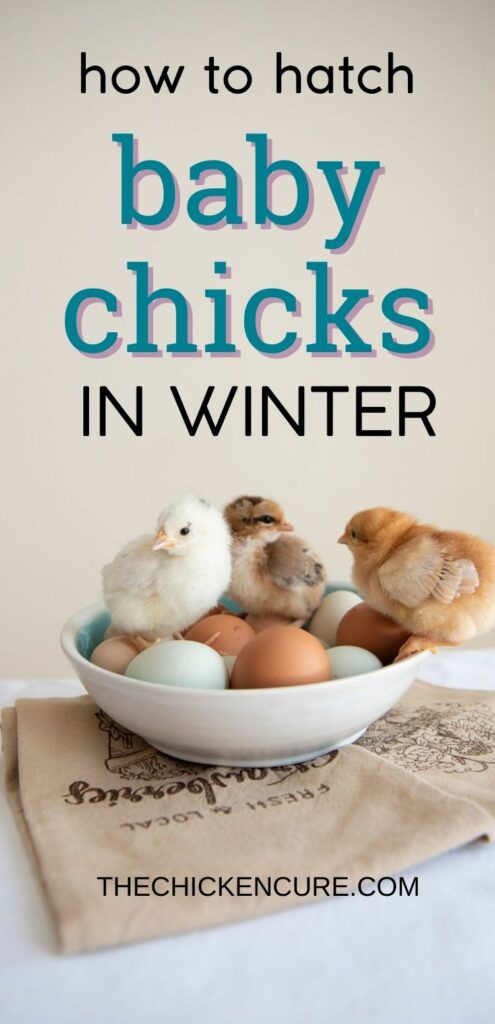Have you ever wondered if you can hatch chickens in the winter, or how cold is too cold for hatching eggs? While it’s not ideal to have a winter hatch, sometimes you lose all your hens to predators, a hen goes broody, or you want to take advantage of peak egg production in spring with new layers.
Hatching chicks is usually a spring time activity, but sometimes a hen goes broody in the winter and you wonder if you should let her have a few eggs to hatch. This happened to me this winter, as we had an unusually warm winter with very little snow. Two of my hens went broody–one in late September, and another in November.

Since I wanted to increase my flock anyway, I asked my neighbour for fertilized eggs, since we don’t have a rooster, and let each hen hatch a few. We ended up with one chick in the September hatch, and 3 in the November one. In this post I’ll tell you about the temperatures they were able to endure, the differences I noticed between spring and fall hatchings, and my recommendations if you find yourself with a broody hen as the winter approaches.
How Cold is Too Cold for Baby Chicks?
In an ideal world, chicks would stay indoors until they are 6 weeks old and fully feathered, and be in temperatures from +20 to +27 degrees Celsius. When hatching chicks in an incubator (therefore without a mama hen) this is good advice. We gave both of our broody hens a supplemental heat lamp for themselves and their chicks, worried that the outdoor temperatures were already too cold.
For both hatches, the overnight temperatures outdoors were generally between +5 to -10 degrees Celcius, and daytime temperatures ranged from -8 to +10 degrees Celcius.
During the first two weeks of the chicks lives, they lived mostly in the wings of the Mama Hen, with short excursions in the brooder for water and food. During the coldest nights, I noticed that both Mama Hens and one of the chicks lower in the pecking order would snuggle together in a corner of the brooder to keep warm.

After the second week, the Mama Hen would lead the chicks out for short excursions around the coop, away from the heat lamp. I was quite surprised at how long they would be, as by this point it was at freezing temperature or below. Then whenever they were done exploring they would settle under the Mama Hen’s wings again to warm up. Around the third week, the chicks would even come out into the run (in freezing temperatures!) for short periods of time.
After a while I wondered if they really needed the heat lamp, and turned it off. The chicks were perfectly fine since they had their Mom. I should note, at this point the temperature has still not been much colder than -10 degrees celcius overnight, and it is warmer in the coop since there are 16 chickens, the coop is insulated, and we use the deep litter method. When it reaches -20 degrees Celcius overnight, I will put the heat lamp back on, as the later set of chicks is nowhere near being fully feathered.

I should also note that if you have access to a heat panel instead of a heat lamp, that heat panels are a much safer option. Heat lamps can break or be knocked over by silly chickens and easily start a fire. If you do use a heat lamp, make sure that it is as secure as possible and can’t be easily moved by the animals.
Should You Hatch Chicks in Winter?
In conclusion, even though my winter hatched chicks are doing well, I still wouldn’t go out of my way to hatch chicks in winter–especially if they were hatched in an incubator and didn’t have a Momma Hen. In observing them, I really feel that having the Momma Hen to warm up to frequently is key, and that the chicks also wouldn’t be as accepted into the flock (and benefit from other hens helping to warm them up on really cold nights) if they didn’t have the Momma Hen.
I also feel that both sets of chicks are slower to grow their feathers, and it seems that it takes them longer than the 6 weeks to fully feather out. If you’ve had a winter hatch, I would love to hear if you have noticed this as well, or if it’s just my particular chicks.

